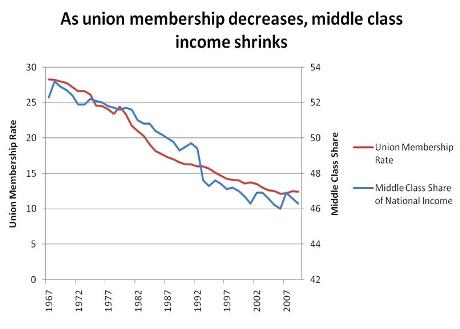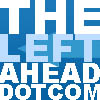 We are the 12 percent. We are union. We built the American middle class. We stand side by side with the rest of the 99 percent in occupation of the streets. We ask that the rest of the 99 percent stand side by side with us in occupation of the workplace.
We are the 12 percent. We are union. We built the American middle class. We stand side by side with the rest of the 99 percent in occupation of the streets. We ask that the rest of the 99 percent stand side by side with us in occupation of the workplace.
The spirit driving the Occupy Wall Street movement has been alive in the United States for over 150 years. Perhaps over 200 years as the first local trade unions were organized in the United States in the 1790’s. For symbolic purposes, I will suggest that the spark occurred 177 years ago. In 1834, women in the mills of Lowell, Massachusetts went on strike to improve their working conditions. Source: The Trade Union Woman (Dodo Press). I find this to be a unique moment in American history. Facing the enormous inequity of exploitation as workers and inequality as 19th century American women, the mill workers of Lowell organized and went on strike. It is an early example of the power of organized labor and a testament to the early sacrifice that went into building the American middle class.
However, my intention is not to pinpoint an official time and place for the birth of the American labor movement. I’m sure there are varying opinions amongst those who study these matters. My intention is to argue that Occupy Wall Street has tapped into a resistance that has long existed in America. Granted, the circumstances of our current economic crisis are unprecedented, but Americans have been channeling the frustration of exploitation into constructive resistance for countless generations by occupying their occupations. The spirit driving the Occupy Wall Street movement is the same spirit that has driven generations of Americans to organize labor unions in pursuit of economic justice and social progress. In my opinion, in order to achieve the Occupy Wall Street movement goal of restoring fairness in wealth distribution, one of the most productive ways to harness its energy is to channel it into rebuilding strength in the labor movement.
The American labor movement has been under systematic attack by the top one percent, Wall Street, and conservative politicians for 30 years. It has been open season in America for those who benefit by destroying labor’s influence and obstructing workers’ ability to organize since President Reagan fired the Federal Aviation Administration’s striking air traffic controllers in 1981. Whether viewed symbolically or practically, this action became both a blueprint and a rallying cry for the countermovement to obliterate the American worker’s organized power. When I say the American worker’s organized power, I don’t just mean the power of union members (the current 12 percent). I mean the power of all American workers (the 99 percent). Whether union or non-union, in present day America, everyone has been squeezed by the top one percent’s assualt on the labor movement. The shrinking of the American middle class is directly related to the systematic weakening of unions.

Source: Think Progress
This graph shows an indisputable link between the health of the American middle class and the health of the American labor movement. In a Labor Day weekend sermon given this year at the East Shore Unitarian Universalist Church in Kirtland, OH, Katie Romich said “It is not a coincidence that the dramatic increase in economic inequality has exactly paralleled the decline of the percentage of unionized workers. Labor unions are, and have been, the front line of the fight for fair wages for working people as well as social policies which help to more equally distribute wealth. As labor unions disappear – and are destroyed – economic inequality rises.” Source: East Shore Unitarian Universalist Church. Katie, a professional mentor of mine, pinpoints a fundamental reality that must be considered as Occupy Wall Street gains momentum and zeroes in on practical measures to achieve its goals. It will be extremely difficult to realize a restoration of fairness in wealth distribution in American without a renaissance expansion of the labor movement.
Union members and labor organizations have quickly embraced participation in the Occupy Wall Street movement. As I argued earlier, the spirit driving these protests is the same spirit that has been building and sustaining the labor movement for most of the existence of our democracy. Indeed, this is a healthy partnership. My intention is not to advocate that the organizers of the Occupy movement should allow the labor movement to take control of its direction or message. Rather, I am advocating that the Occupy movement should embrace expansion of the labor movement as a pragmatic pursuit that is necessary for achieving its goal of restoring fairness in wealth distribution. It will take institutional strength to create the pressure that can overcome the one percent’s monied power in government and enact meaningful reforms that can begin restoring the middle class. In my view, an expanding labor movement is the only institutional vehicle belonging to the 99 percent through which that type of pressure can be channeled. It seems to me that any American that stands with the Occupy Wall Street movement should immediately join a labor union if one is available to join. For those who do not have a union available to them, it is time to get serious about demanding the reinstituiton of the workers’ rights that have been stripped away over the last 30 years.
Of course, there are two sides to this coin. We who are in the labor movement, the 12 percent, need to quickly become more innovative in creating methods for inclusion. We need new channels through which more Americans can actively particpate in rebuilding unions in America. We should seriously contemplate creating opportunities through which we can bring unemployed Americans as well as those who work in occupations with extreme obstacles to unionization into our ranks. We accurately speak about how all American workers benefit from our existence. Let’s make a concerted effort to create opportunities for more of the 99 percent to plug into the movement even when the traditional channels aren’t available to them. In the technologically advanced 21st century America that we live in, as the one percent continue to close off traditional pathways to unionization, let’s harness the power of technology to circumvent their obstruction by using new tools that can allow more Americans an opportunity to participate in the labor movement. As we continue to fight to rebuild the necessary infrastructure of expanding unionization within the workplace that is at the core of our movement, let us also create alternative pathways through which workers can gain a voice and occupy their occupations.
At the core of any movement towards greater economic justice is the empowerment of people. I applaud Occupy Wall Street’s ability to cut right to the heart of the matter with the mantra, “We are the 99 percent.” Ninety-nine seems a whole lot bigger than one. That is awfully empowering. There is a lot to be said for presenting the economic realties in America in such a way that ordinary citizens are excercising their power by taking to the streets. I have great hope for the development of the Occupy movement as well as great hope that we might be on the cusp of the renaissance expansion of the labor movement that is long overdue in our country. I believe that these movements need each other to capitalize on the spirit that is driving both towards achieving significant progress for the 99 percent. Occupy your city. Occupy your Occupation. Rebuild the American middle class.



